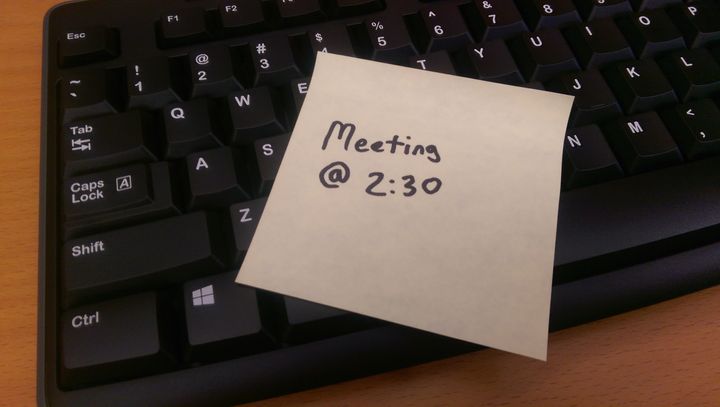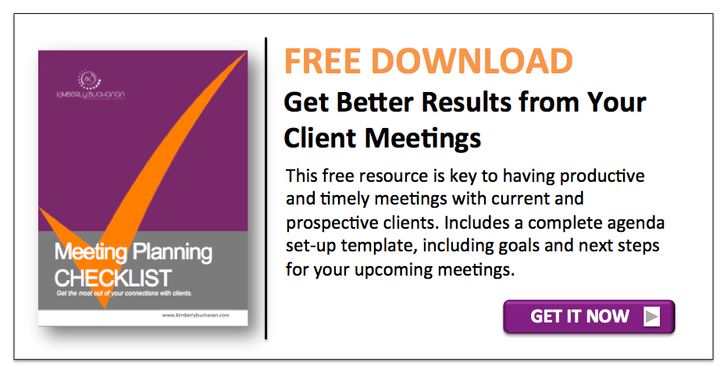
As a busy woman, with two growing boys and a successful business, I rarely have any time to waste. One thing that’s really important to me is a personal connection with my business clients. This can be face-to-face, via conference call, Skype or even Webex. No matter how we connect, I want to ensure that everyone gets the most out of it. With this in mind, I’ve learned to make meaningful connections within a short period of time.
HERE’S A GREAT CHECKLIST TO MAKE THE MOST OF YOUR MEETINGS:
1. DETERMINE WHAT YOU WANT TO ACHIEVE: Throw that damn recurring meeting out the window, today! You know, that 9 – 10 am meeting that’s scheduled for every Monday morning. It’s the meeting you show up to just because it’s on your calendar. Decide if a meeting is necessary. And if you can’t figure out exactly what you want this meeting to accomplish – CANCEL IT - and use your time more wisely. Showing up, just to show up, is a waste of the time you could be using to make progress towards other goals, complete tasks or follow-up on additional leads that could result in more business.
If you can’t figure out exactly what you want the meeting to accomplish - CANCEL IT - and use your time more wisely.
2. DETERMINE WHO’S COMING: Invite only the people who can add value to the meeting. This will cut down on a lot of the small talk or people talking just because they feel they need to say something – even if it doesn’t add any real value. Believe it or not, once you invite a person to a meeting, most feel compelled to participate. This is a major waste of your time. You’ll get more out of the meeting by inviting only the people that can add valuable input.
3. DISTRIBUTE AN AGENDA: Not just an agenda of topics to be discussed. I want you to add a time limit to each topic. This will send a strong message to attendees, prompting them to do the necessary background work, prior to the meeting. Having an agenda will also help you to stay on task towards the goals of the meeting.
4. SET THE TONE: At the beginning of the meeting, provide an overview of what you want to accomplish. And also review the agenda so everyone is on the same page. Stick to the agenda and only to the agenda. Allow as many people as possible to contribute to discussions. But once time is up, move on the the next topic listed on the agenda. Should people continue to hold additional conversations, politely ask them to continue their discussions off-line.
5. TAKE GOOD NOTES: Jot down tasks and decisions only. Discussions don’t do you much good if you are not coming to any conclusions. I equate that to talking in circles. It’s best to keep notes in a highly visible location, such as a whiteboard. Tasks should note a person responsible and a deadline for completion. Decisions should detail what has been decided by the team.
6. SET THE NEXT AGENDA: About five minutes prior to the close of the meeting, summarize your tasks and decisions. Invite feedback for the next agenda. If at all possible, set a date and time for the next meeting.
7. FOLLOW UP: Share the meeting notes, including actions and decisions. Stress the importance of everyone completing assigned tasks by agreed deadlines.
FREE DOWNLOAD:
Use my Meeting Planning Worksheet to get the most out of your connections with clients.

